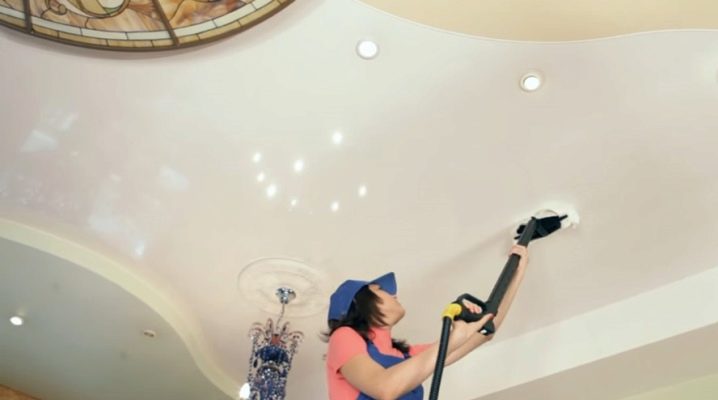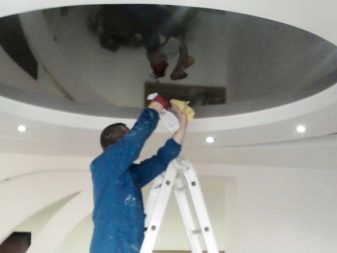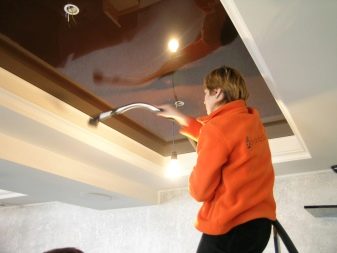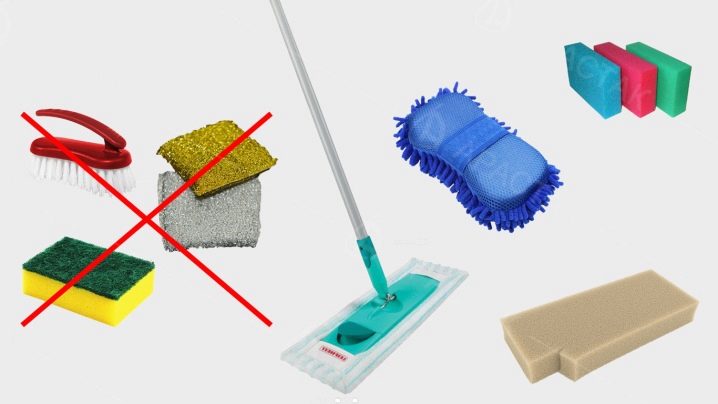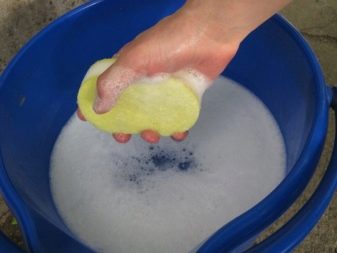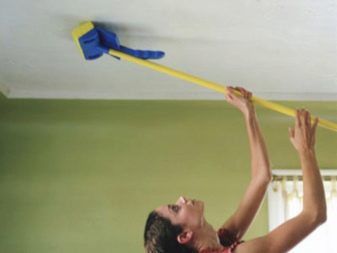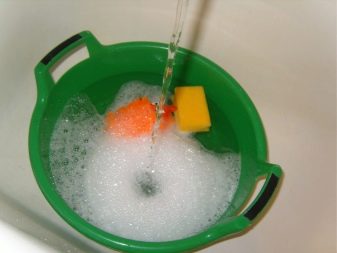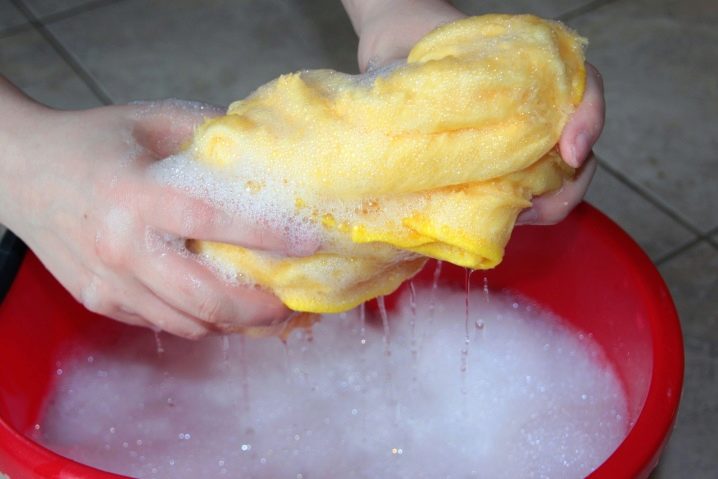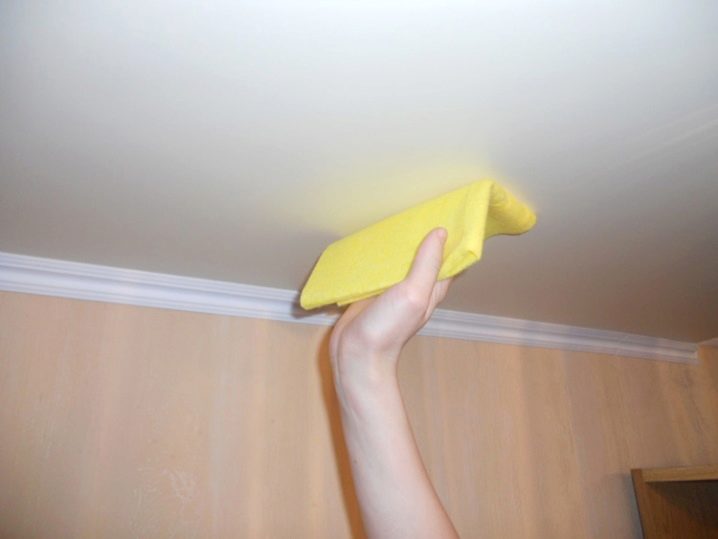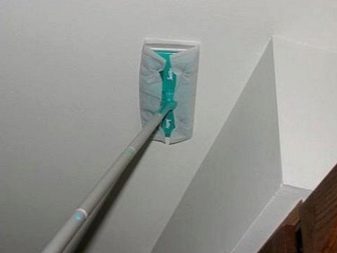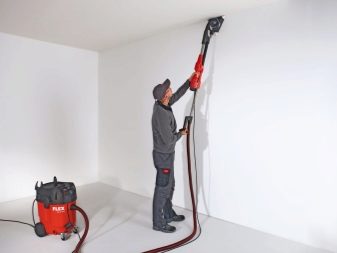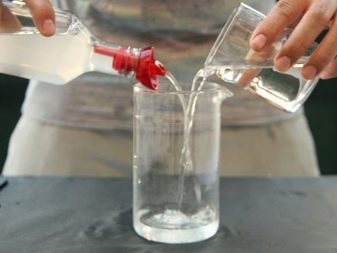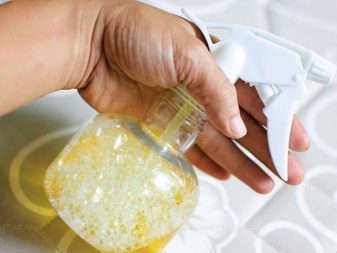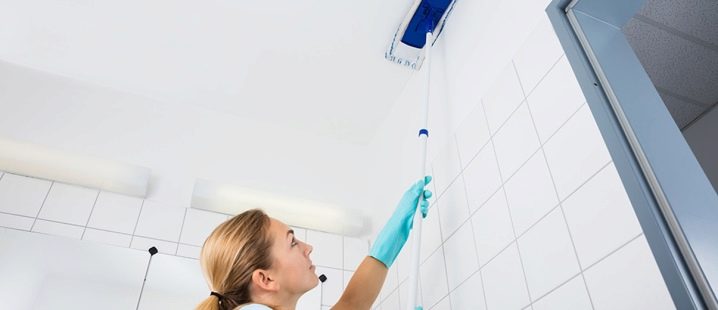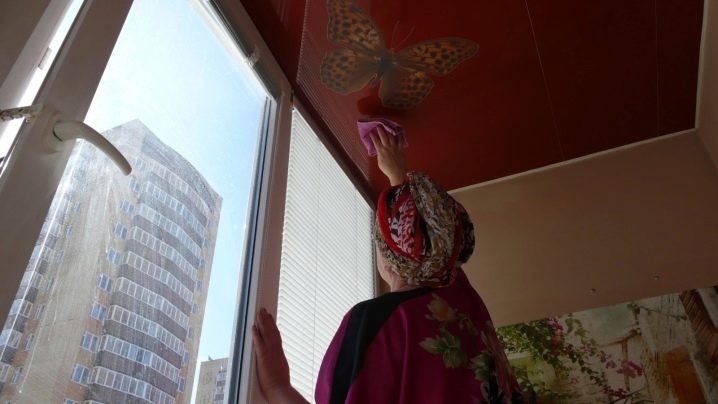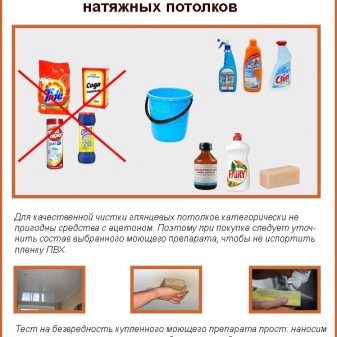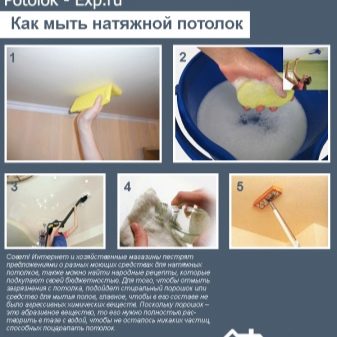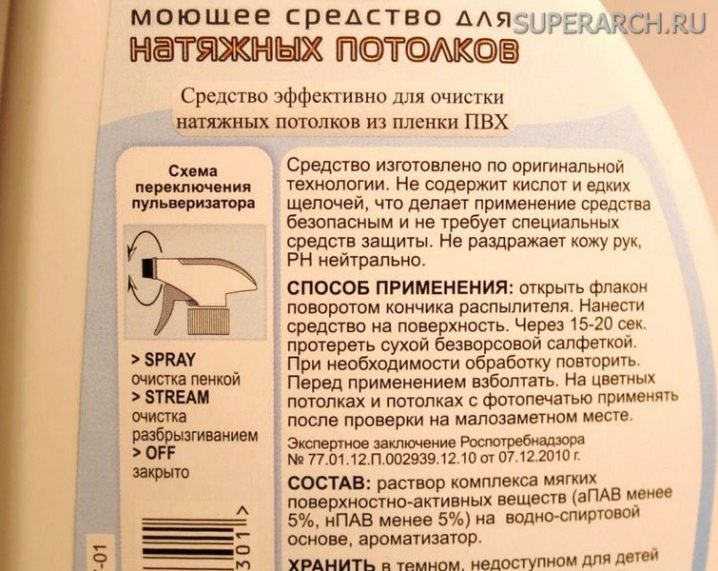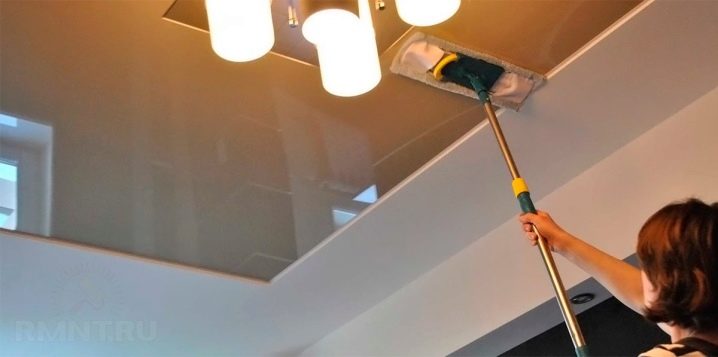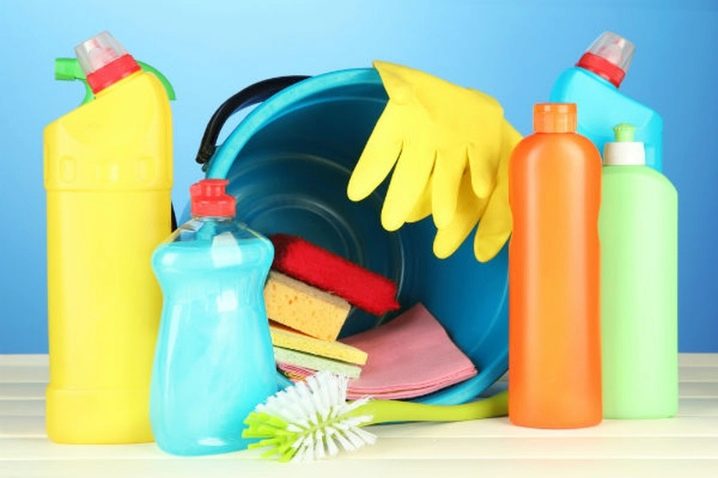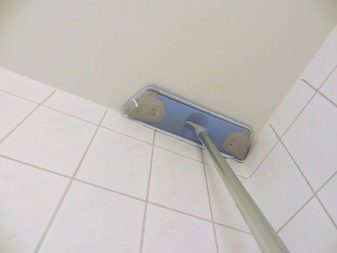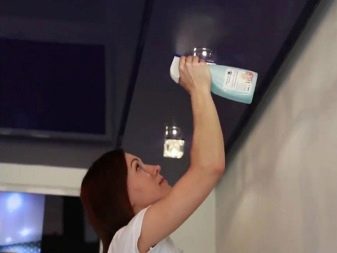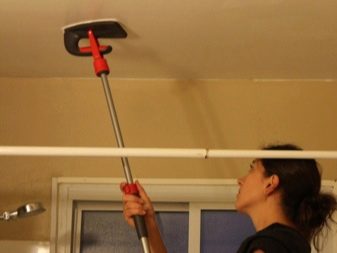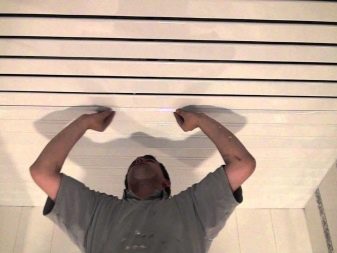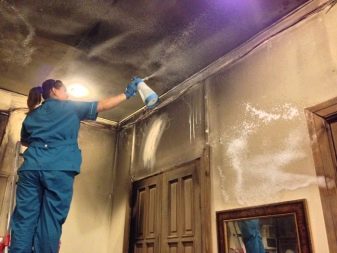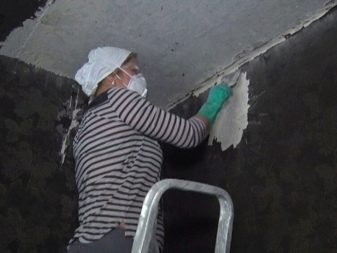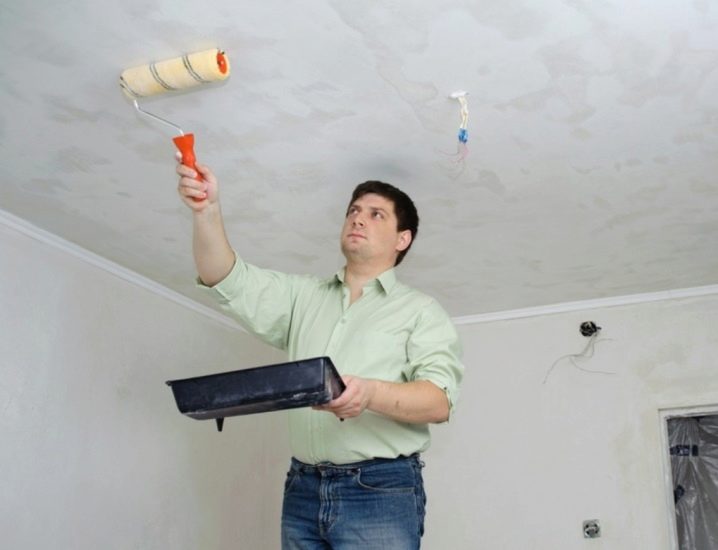The subtleties of washing ceilings
Cleaning the home - an integral part of the life of any person. During the general cleaning, the hostess seeks to bring cleanliness throughout the house, paying attention to even the smallest details, but not always during such global operations, we raise our eyes to the ceiling in order to wash it too. Of course, the ceiling should be looked after, because dust and dirt also accumulates on it, even if it is not so visible to the naked eye. Particularly plagued by pollution in the kitchen ceiling because of the soot deposited on it from cooking. Let us examine the main types of ceilings in modern homes and ways to care for them.
General recommendations
Prepare convenient access for work:
- The stepladder or table, from which it will be easy to get to the surface being cleaned, will fit perfectly.
- It is advisable not to use mops, brushes with a hard pile and brooms - they can easily scratch the surface of the ceiling. A brush with short soft bristles or a vacuum cleaner with a special nozzle is suitable for pre-cleaning from visible dirt.
- For wet cleaning use a sponge, flannel or any other soft cloth.
- Small spots are easily removed with a simple school eraser. After this procedure, clean the area with a dry cloth to remove the strip.
- You will also need a basin or bucket.
- When cleaning the ceiling from dirt, inevitably splashing of detergents and possible falling drops from above - it is advisable to protect yourself by wearing safety glasses.
- Prepare rubber gloves to protect your hands.
- Before starting work, use a cleaning agent to clean a small part of the web in a less visible place - for example, above the door. This is necessary to ensure its safety for the color and texture of the surface.
Painted ceiling
Since ancient times in Russia, ceilings were whitened using ordinary chalk and lykovoy bast, there was no talk of washing such a ceiling, so the whitewash was updated about once a year.In case the bleached surface began to crumble, the ceiling was simply washed and whitened again.
Currently, the ceiling is often painted with latex-based compounds., acrylic or oil paint. And although the latter is not considered to be very environmentally friendly, since the coating clogs the ceiling pores and prevents adequate ventilation, such a coating allows you to freely carry out wet cleaning of the painted surface.
For washing these ceilings, a solution of ordinary soap will do: beat the lather and stir it in warm water, and a solution of dishwashing liquid is also perfect. After the procedure, wipe the surface dry and let it dry.
Kitchen ceilings are often covered with a water emulsion - such a composition is afraid of water, since the formation of stains and streaks is possible. To clean this canvas, use special wipes.
Papered
It assumes only dry cleaning with a brush or vacuum cleaner. You can remove the dust with a slightly damp cloth or sponge, but you should not be carried away in a similar way to avoid damage to the wallpaper. The same recommendations apply to plasterboard ceilings.
Plastic tile
This type of ceiling is loved for resistance to dirt, relatively low cost and ease of maintenance.
A soap solution is perfect for cleaning this ceiling. But pay attention: laundry soap is 72% alkaline, which can adversely affect the appearance of the ceiling surface.
Vinegar and vodka do a good job with contaminants, but it is not recommended to use them for plastic with a pattern - there is a possibility of image damage.
Bleach will help to update the color of the yellowed tiles - 2-3 tablespoons of the product per 2 liters of water. Try to wash the panels in one direction, in order to avoid the appearance of stains.
The use of melamine sponge is widely used in the fight for the purity of plastic panels, but at first it makes sense to test it in an inconspicuous place, since a negative plastic reaction is possible.
Fabric
Such coverage is often used in living rooms and nurseries.
The accumulation of dust by textiles becomes a problem, therefore, to care for such a ceiling, you need to adhere to the following rules:
- regular vacuuming;
- timely removal of stains;
- cleaning of pollution is best done from the edges of the spot to the center;
- Do not be carried away by excessive use of liquid - tissue surfaces do not tolerate excess moisture and may react with the appearance of unwanted stains;
- avoid the use of chlorinated cleaning products;
- after cleaning, wipe the surface with a paper towel.
Tensioner
Holders of suspended ceilings are somewhat simpler, because such coatings almost do not accumulate dirt, and, as a result, are excellent for the kitchen, where fat all the time is adjacent to the temperature difference.
The stretch ceiling should be washed gently, avoiding excessive pressure on the surface. A soap solution and a soft cloth or sponge are also suitable for cleaning such a ceiling.
Do not use aggressive detergents containing acetone, kerosene or acids. Be careful with sharp objects - if there is an emulsion paint stain on the ceiling, first soften it with warm water and then remove it with a rubber spatula.
You should also refrain from the use of abrasive and sodonosoderzhaschih powders.
Glossy ceiling can be cleaned with alcohol-based products. for washing windows and mirrors. Also suitable aerosol for any glass surfaces or ammonia solution, popularly known as ammonia. They also help get rid of traces of pens and markers on the ceiling surface. To add shine, you can simply wipe the cloth with a solution of alcohol, then rinse with water and wipe dry.
Currently, there are many special tools for the care of stretch ceilings, which are available in the form of a spray.
After work, it is necessary to ventilate the room to allow the ceiling film to dry completely.
Tiled
Ceilings of this type are now widespread due to their ease of use, in particular, moisture resistance. The only difficulty in the care of the foam coating is the porous surface of the tile, as well as the presence of textured elements on it. To clean the dirt from the grooves, it is better to use a sponge of soft foam rubber and a solution of sodium orthophosphate with water. This tool should gently rinse the surface until the ceiling surface is completely cleaned of dust and stubborn yellow.For the subsequent removal of odor tiles can be washed with a solution of vinegar - the smell will disappear in a short period of time.
Suspension
When choosing a cleaning agent for the care of suspended ceilings, preference should be given to chemicals without acetone; a dishwashing detergent containing no granules and abrasives is suitable. Also options of the washing liquids with the content of alcohol or ammoniac are possible. When washing the ceiling, pay attention to the baseboards, then rinse them with clean water and wipe dry with a soft cloth or paper towel.
Ceilings can also be cleaned with a vacuum cleaner., but before starting work it is necessary to make sure that the structure is securely fixed in order to avoid any damage to the plates.
Rack
Rack ceilings today are not uncommon. When caring for models of this design, do not use powders and any cleaners containing abrasives, as they will damage the smooth chrome surface and ruin the look of the metal. When choosing a sponge is better to use something from a lint-free or non-woven material. Aerosols for cleaning windows will quickly give such a ceiling a shine.
After the fire
In this situation, the surface is covered with soot and soot, if you try to wash it with a brush, small particles will be trapped in the pores of the surface and it will be impossible to remove them from there.
Take the following recommendations:
- First of all, take care of your protection - wear clothes that you can leave without regret after work, prepare a hat, a respirator, rubber gloves and goggles.
- Cover the floor to prevent black streaks from falling particles of burning on it.
- At the maximum suction mode of the existing ones, collect all carbon deposits, do not touch the surface to be cleaned with a pipe, if possible - use an industrial vacuum cleaner for this purpose.
- With a brush with stiff bristles, start sweeping away the soot and soot, the movements should be sharp in order to avoid rubbing soot into the surface. Try to carry out this manipulation moving in one direction.
- Sponges for fireplace glasses are perfect for the next stage - you need to use sharp movements to clean off the remaining cinder, you should also move in one direction.
- Next, a soap solution is being prepared in the tank using soap shavings or dishwashing detergent.Using a rag or sponge with quick, jerky movements, the ceiling surface is washed as many times as necessary.
- After drying, the ceiling must be primed, after which it is ready for puttying and painting.
How to wash the suspended ceiling, see below in the video.
